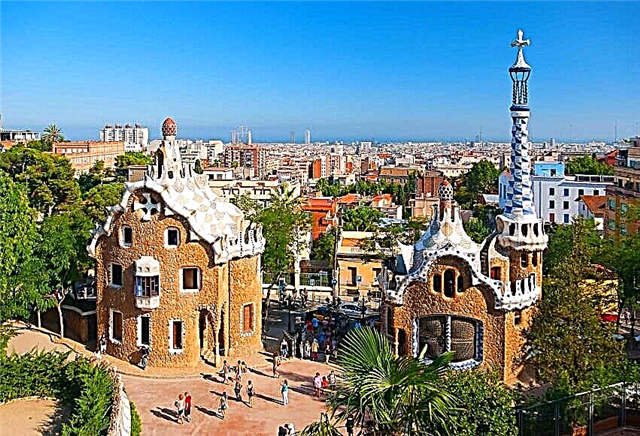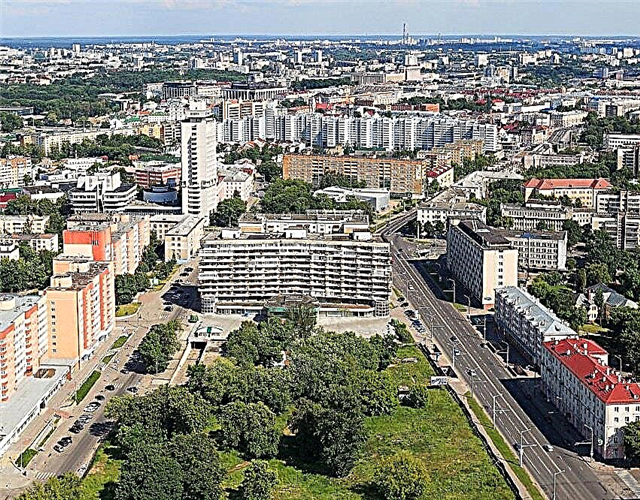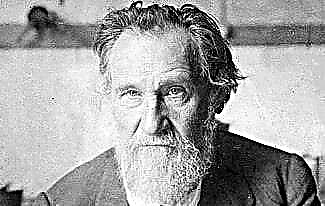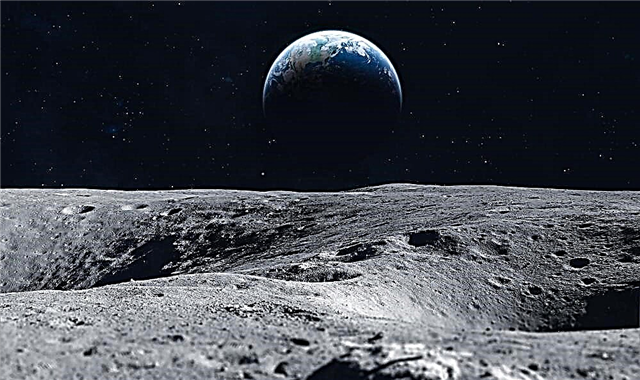Once settled in our heart,
Siberia will remain in it forever!
The most important stage in life
Harsh, taiga years!
The character is tempered here quickly!
And people are tested in deeds!
You even think differently in Siberia
You realize the scope of the Fatherland!
(V. Abramovsky)
Siberia is a broad concept in every sense of the word. Tundra, taiga, forest-steppe, steppe and desert are spread over a huge, truly endless territory. There was a place for ancient cities and modern megalopolises, modern roads and the remnants of the tribal system.
Someone frightens Siberia, someone feels at home, only having passed the Ural ridge. People came here to serve their sentences and in search of dreams. They transformed Siberia, and then realized that all these changes are cosmetics, and millions of square kilometers of a wide variety of landscapes still live the same life that they lived tens of thousands of years ago.
Here are the stories that characterize the size of Siberia. In preparation for the coronation of Empress Elizabeth Petrovna, couriers were sent all over Russia to bring the most beautiful girls from the peoples inhabiting the country to the capital. A year and a half remained about the coronation, there was enough time, even by the standards of Russian open spaces. Not everyone coped with the task of bringing the participants to the first Beauty of Russia contest. The head quarrier Shakhturov, sent to Kamchatka, formally fulfilled the task - he left the Kamchadalka in the capital. Only now he brought them as much as 4 years after the coronation. And the famous Norwegian Fridtjof Nansen, glancing at the map before his trip to Siberia, noticed that if the Norwegian parliament were convened on the terms of the Yenisei province, it would have 2.25 deputies.
Siberia is a harsh but rich land. Here, in the thickness of the earth, the entire periodic table is stored, and in marketable quantities. True, nature is extremely reluctant to give up its wealth. Most of the minerals are extracted from permafrost and stone. To build a power plant - pull the dam across the river, whose other bank is not visible. Have you been delivering food for six months? Yes, people can get out of Susuman for six months only by plane! And only in Magadan. And Siberians do not perceive such a life as a feat. Like, it's hard, yes, and sometimes cold, well, well, not everyone in the resorts and in the capitals ...
It is worth making a reservation. Geographically, Siberia is the territory between the Urals and the Far East. That is, formally Kolyma, for example, or Chukotka is not Siberia, but the Far East. Perhaps, for those living in those regions, such a division is really significant, but for the overwhelming majority of the inhabitants of the European part of Russia, Siberia is everything that lies between the Urals and the Pacific Ocean. Let's start with this little geographic misconception.  Like this
Like this
1. The development of Siberia proceeded at a fantastic pace. Through the efforts of a handful, by now, people, Russians reached the Pacific Ocean in 50 years, and in another 50 - to the Arctic Ocean. And these were not the breakthroughs of individual expeditions. Forts were set up along the routes, people settled, future roads were outlined.
2. Finland is poetically called the “Land of a Thousand Lakes”. In Siberia, only on the territory of the Vasyugan bogs there are 800,000 lakes, and their number is constantly increasing due to the continuing swamping of the area. The Vasyugan swamps can be considered a stash for a rainy day: there are 400 km3 water and a billion tons of peat at a depth of only 2.5 meters.
3. Siberia has 4 of the 5 most powerful hydroelectric power plants in Russia: Sayano-Shushenskaya and Krasnoyarsk hydroelectric power plants on the Yenisei, and Bratsk and Ust-Ilimskaya hydroelectric power plants on the Angara. The situation with thermal generation is more modest. The five most powerful are two Siberian stations: Surgutskaya-1 and the most powerful in the country Surgutskaya-2.

GRES Surgutskaya-2
4. The second half of the 19th and the beginning of the 20th centuries was wasted by Russian geographers and historians on an absolutely meaningless dispute about whether Russia is growing with Siberia or whether Russia itself is moving eastward, leveling the concept of Siberia. Over the years, this discussion looks just as useless and fruitless as the discussion between Westerners and Slavophiles a little earlier. And the outcome for them is the same: the Bolsheviks came, and the majority of the participants in the discussions (those who were lucky) had to engage in really socially useful work.

D.I. Mendeleev suggested portraying Russia in this perspective
5. Even at the beginning of the twentieth century, state administration in the Arctic regions at the mouth of the Yenisei looked like this. Once every few years, a policeman with several lower ranks came to the area of the Samoyed camp (in which all northern peoples were enrolled). The Samoyeds were gathered for a kind of elections, where not by washing, so by rolling they were forced to elect a headman. Usually it was one of the older members of the community, who spoke Russian more or less tolerably. This headman received the privilege of killing six months every two years on a trip south to pay the poll tax. The headman received neither salary nor even exemption from the poll tax. Other members of the tribe did not receive anything from the tax. And the amount of the tax was 10 rubles 50 kopecks - a lot of money in those places.
6. The southern part of Siberia is, as it were, strung on two railway lines - the Trans-Siberian (the longest in the world) and the Baikal-Amur mainline. Their importance is evidenced by the fact that both the Transsib, the construction of which was completed in 1916, and the BAM, which was commissioned in 1984, have been operating at the limit of their capacity practically from the very beginning of their existence. Moreover, both lines are constantly being actively modernized and improved. So, only in 2002 the electrification of the Transsib was completed. In 2003, the complex Severomuisky tunnel was commissioned at BAM. From the point of view of passenger traffic, the Trans-Siberian Railway can be considered a visiting card of Siberia. A train trip on the Moscow-Vladivostok route lasts 7 days and in the luxury version costs about 60,000 rubles. The train goes through all major Siberian cities and crosses all the mighty Russian rivers, from the Volga to the Yenisei, bypasses Lake Baikal and ends its journey at the shores of the Pacific Ocean. With the introduction of renewable travel, the Rossiya train has become popular with foreigners.

7. You can also cross Siberia from east to west by car. The length of the Chelyabinsk - Vladivostok route is about 7,500 kilometers. Unlike the main railway, the road goes through wild places, but enters all major cities. This can be a problem - bypass roads are rare in Siberia, so you have to wade through cities with the attendant pleasures of traffic jams and sometimes disgusting roads. In general, the quality of the road is satisfactory. In 2015, the last gravel section was dismantled. The infrastructure is well developed, gas stations and cafes are located a maximum of 60 kilometers from each other. Under normal conditions in summer, the road with overnight stays will take 7 - 8 days.
8. There were times when thousands of foreigners moved to Siberia on a voluntary basis. Thus, in the 1760s, a special manifesto was adopted, allowing foreigners to settle in Russia wherever they wanted, and granting the settlers extensive benefits. The result of this manifesto was the resettlement of almost 30,000 Germans to Russia. Many of them settled in the Volga region, but at least 10,000 crossed the Urals. The educated stratum of the population was then so thin that even the ataman of the Omsk Cossacks became the German EO Schmidt. Even more surprising is the resettlement of 20,000 Poles to Siberia at the turn of the 19th and 20th centuries. The lamentations about the despotism of tsarism and the national oppression of the great Polish nation ended exactly when it turned out that the settlers in Siberia were given land, exempted from taxes and also provided travel.
9. Everyone knows that it is colder in Siberia than anywhere else where people live. The specific indicator is -67.6 ° С, recorded in Verkhoyansk. It is less known that for 33 years, from 1968 to 2001, Siberia held a record indicator of atmospheric pressure at the earth's surface. At the Agata meteorological station in the Krasnoyarsk Territory, a pressure of 812.8 millimeters of mercury was recorded (normal pressure is 760). In the 21st century, a new record was set in Mongolia. And the Trans-Baikal town of Borzya is the sunniest in Russia. The sun shines in it 2797 hours a year. The indicator of Moscow - 1723 hours, St. Petersburg - 1633.
10. Among the massifs of taiga in the north of the Central Siberian Plateau rises the Putorana Plateau. This is a geological formation that arose as a result of the rise of a section of the earth's crust. A nature reserve is organized on a vast plateau. Among the landscapes of the Putorana Plateau are layered six-sided rocks, lakes, waterfalls, canyons, mountain forest-tundra and tundra. The plateau is home to dozens of species of rare animals and birds. The plateau is a popular tourist attraction. Organized tours from Norilsk cost from 120,000 rubles.

11. In Siberia there are two gigantic monuments to human miserliness. This is the Ob-Yenisei waterway, built in the 19th century, and the so-called "Dead Road" - the Salekhard - Igarka railway, which was laid in 1948 - 1953. The fates of both projects are remarkably similar. They were partially implemented. Steamships ran along the water system of the Ob-Yenisei Way, and trains ran along the polar highway. In both the north and south, further work was required to complete the projects. But both the tsarist government in the 19th century and the Soviet authorities in the 20th century decided to save money and did not allocate funding. As a result, both paths decayed and ceased to exist. Already in the 21st century, it turned out that the railway was still needed. It was named the Northern Latitudinal Passage. Completion of construction is scheduled for

2024 year.
12. There is a well-known phrase by AP Chekhov about how he, passing through Siberia, met an honest man, and he turned out to be a Jew. Moving Jews to Siberia was strictly prohibited, but there was hard labor in Siberia! Jews who played a very significant role in the revolutionary movement ended up in Siberia in shackles. Some part of them, having freed themselves, remained away from the capitals. Beginning in the 1920s, the Soviet authorities encouraged Jews to move to Siberia by setting aside a special district for this. In 1930 it was declared a national area and in 1934 the Jewish National Region was established. However, the Jews did not particularly strive to Siberia, the historical maximum of the Jewish population in the region was only 20,000 people. Today, about 1,000 Jews live in Birobidzhan and its environs.

13. The first oil on an industrial scale was found in Siberia in 1960. Now, when huge territories are dotted with drilling rigs, it may seem that there is no need to look for something in Siberia - stick a stick at the Earth, or oil will run, or gas will flow. In fact, despite the presence of many signs confirming the presence of "black gold", from the first expedition of geologists to the discovery of an oil field, 9 long years of hard work passed. Today, 77% of Russia's oil reserves and 88% of gas reserves are located in Siberia.
14. There are many unique bridges in Siberia. In Norilsk, the largest northern bridge in the world has been thrown across the Norilskaya River. The 380-meter bridge was built in 1965. The widest - 40 meters - bridge in Siberia connects the banks of the Tom in Kemerovo. A metro bridge with a total length of more than two kilometers with a surface part of almost 900 meters is laid in Novosibirsk. The 10-ruble note depicts the Krasnoyarsk Communal Bridge, its length is 2.1 kilometers. The bridge was built using pontoons from ready-made blocks assembled on the shore. The 5,000-ruble banknote depicts the Khabarovsk bridge. The span of the second bridge in Krasnoyarsk exceeds 200 meters, which is a record for all-metal bridges. Already in the 21st century, the Nikolaevsky bridge in Krasnoyarsk, the Bugrinsky bridge in Novosibirsk, the Boguchansky bridge in the Krasnoyarsk Territory, the bridge over the Yuribey in the Yamalo-Nenets Autonomous Okrug, the bridge in Irkutsk and the Yugorsky bridge were opened in Siberia.

Cable-stayed bridge across the Ob
15. Since the 16th century Siberia has been a place of exile for all sorts of criminals, both criminal, political, and “generalists”. How else to call the same Bolsheviks and other revolutionaries who went to the Trans-Urals for the so-called "expropriations", "exes"? After all, they were formally tried under criminal articles. Before Soviet power, and even in its first years, exile was only a way to send a convicted person to hell, out of sight. And then the USSR needed timber, gold, coal and much more from the gifts of Siberian nature, and the times were harsh. Food and clothes, and, therefore, their own life, had to be worked out. The climate did little to survive. But the Siberian and Kolyma camps were not at all extermination camps - after all, someone had to work. The fact that the death rate of Siberian prisoners was not universal is also evidenced by the abundance of Bandera survivors and other forest freedom fighters in the camps. In the 1990s, many were surprised to find that there were quite a few strong Ukrainian elders released by Khrushchev from Siberia, and many of them retained their German uniforms.

16. Even the most chaotic story about Siberia cannot do without mentioning Baikal. Siberia is unique, Baikal is unique in a square. A huge lake with varied, but equally beautiful landscapes, the purest water (in some places you can see the bottom at a depth of 40 meters) and a variety of flora and fauna is the property and treasure of all Russia. One fifth of all fresh water on earth is concentrated in the depths of Lake Baikal. Yielding to some lakes in terms of water surface area, Baikal surpasses all freshwater lakes of the planet in volume.

On Baikal
17. The main gift of nature with a negative meaning is not even the cold climate, but the gnaw - mosquitoes and midges. Even in the hottest weather, you have to dress in warm clothes, and in wild places completely hide the body under clothes, gloves and mosquito nets. An average of 300 mosquitoes and 700 midges attack a person per minute. There is only one escape from midges - the wind, and preferably cold. In Siberia, by the way, there are often winter days in the middle of summer, but there are never summer days in the middle of winter.

18. In Siberia, one of the most mysterious mysteries in the history of Russian emperors was born and continues to exist unsolved. In 1836, an old man was exiled to the Tomsk province, who was detained in the Perm province as a vagrant. He was called Fyodor Kuzmich, Kozmin mentioned his surname only once. The elder lived a righteous life, taught children to read and write and the Law of God, although during the arrest he declared that he was illiterate. One of the Cossacks, who happened to serve in St. Petersburg, recognized the Emperor Alexander I in Fedor Kuzmich, who died in 1825 in Taganrog. Rumors of this spread with lightning speed. The elder never confirmed them. He led an active life: he corresponded with famous people, met with church hierarchs, healed the sick, made predictions. In Tomsk, Fyodor Kuzmich enjoyed great authority, but behaved very modestly. Traveling through the city, Leo Tolstoy met with the elder. There are many arguments both in support and against the version that Fyodor Kuzmich was Emperor Alexander I, who was hiding from the bustle of the world. A genetic examination could dot the i's, but neither the secular nor the church authorities show any desire to carry it out. Investigations continue - in 2015, a whole conference was organized in Tomsk, which was attended by researchers from all over Russia and from foreign countries.
nineteen.On June 30, 1908, Siberia hit the front pages of all the world's leading newspapers. In the deep taiga, a powerful explosion thundered, the echoes of which could be heard throughout the globe. Possible causes of the explosion are still being discussed. The version of a meteorite explosion is most consistent with the discovered traces, therefore the phenomenon is most often called the Tunguska meteorite (the Podkamennaya Tunguska river flows through the area of the epicenter of the explosion). Representative scientific expeditions were repeatedly sent to the place of the incident, but traces of an alien spacecraft, in which many researchers believed, were not found.

20. Scientists-professionals and amateurs are still arguing about whether the expansion of the Russian state into Siberia was peaceful or whether it was a process of colonization with all the ensuing consequences in the form of extermination of the indigenous population or driving them out of their places of residence. The position in the dispute often depends not on the real events of history, but on the political convictions of the disputant. The same Fridtjof Nansen, going on a steamer up the Yenisei, noticed that the area is very similar to America, but Russia did not find its own Cooper to describe its beauty against the background of an adventure plot. Let's say that Russia had enough Coopers, not enough stories. If Russia really fought in the Caucasus, then these wars were reflected in Russian literature. And if there are no descriptions of the battles of small Russian detachments with thousands of Siberian armies with the subsequent punishment of the latter, it means that Russia's expansion to the east was relatively peaceful.









